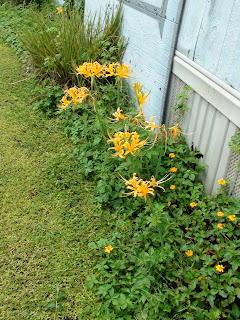Mirrors-No, not around the arena
I thought I'd get a bit crafty on my post today and share what I do with old, unusable tack. I make what I call "Tacky" mirrors or picture frames. I have used mirror tiles in the past because they are inexpensive but harder to work with (no frame) so lately I've been working with what I can find in thrift stores. You can pick up frames for a dollar or two with the glass or mirror still in them. Try to find ones with fairly thick frames. They are easier to drill into without breaking mirror (if it's not removable) and gives you more area to play with. Get your old tack together and clear a space to work.
You'll need:
Old tack
Frames
Fishing line
Drill
Small drill bits
Heavy duty glue (contact cement)
Picture hanging hooks
Wine (always good if you work in the evening after dinner)
Coffee will have to do if you work in the AM
I usually start with a length of rein or girth (depending on the size of the frame) and layer on top of that with bigger pieces of tack like a bit or horse shoe and fit smaller pieces around that. The larger pieces you will have to secure with the fishing line as well as glue or they will fall off. Drill two small holes through the frame close together, like this > : .
Be careful, of course, not to hit the glass with the drill bit and make sure you put a layer of wood or something under your project. Especially if you are working on the dining room table the mother-in-law gave you even if you have always secretly hated it.
Picture frames are usually a lot easier because you can remove the glass to work on it and look for mirrors like that too. You can go back and cover the drill holes with leather keepers, small buckles or pieces of reins, etc.. Anyway......Feed the fishing line through the hole, around the piece of tack and through the second hole. Try to hide the fishing line as much as possible, pull tight and secure (tie a knot) in the back of the frame. I add a dab or two of glue underneath the line on the back too to keep the piece from shifting.
Play around with your design and placement. Try to cover the places where you cut the leather or secured pieces by layering on top of them. Use buckles, leather keepers and small pieces. You can do one all western or one all English. Even one for horse racing or eventing fans. For my friends that show I will even add a blue ribbon. These make great gifts for all your horsey friends or fund raisers for you local 4H Club.
Here's some projects in various stages of done:
Basic start
in process
Needs a few finishing touches (more layering)
I've been thinking about the mirror over the sink in my horsey themed bathroom.
More recycled and crafty stuff to come.
Have fun and keep the cover on the contact cement!













.jpg)















